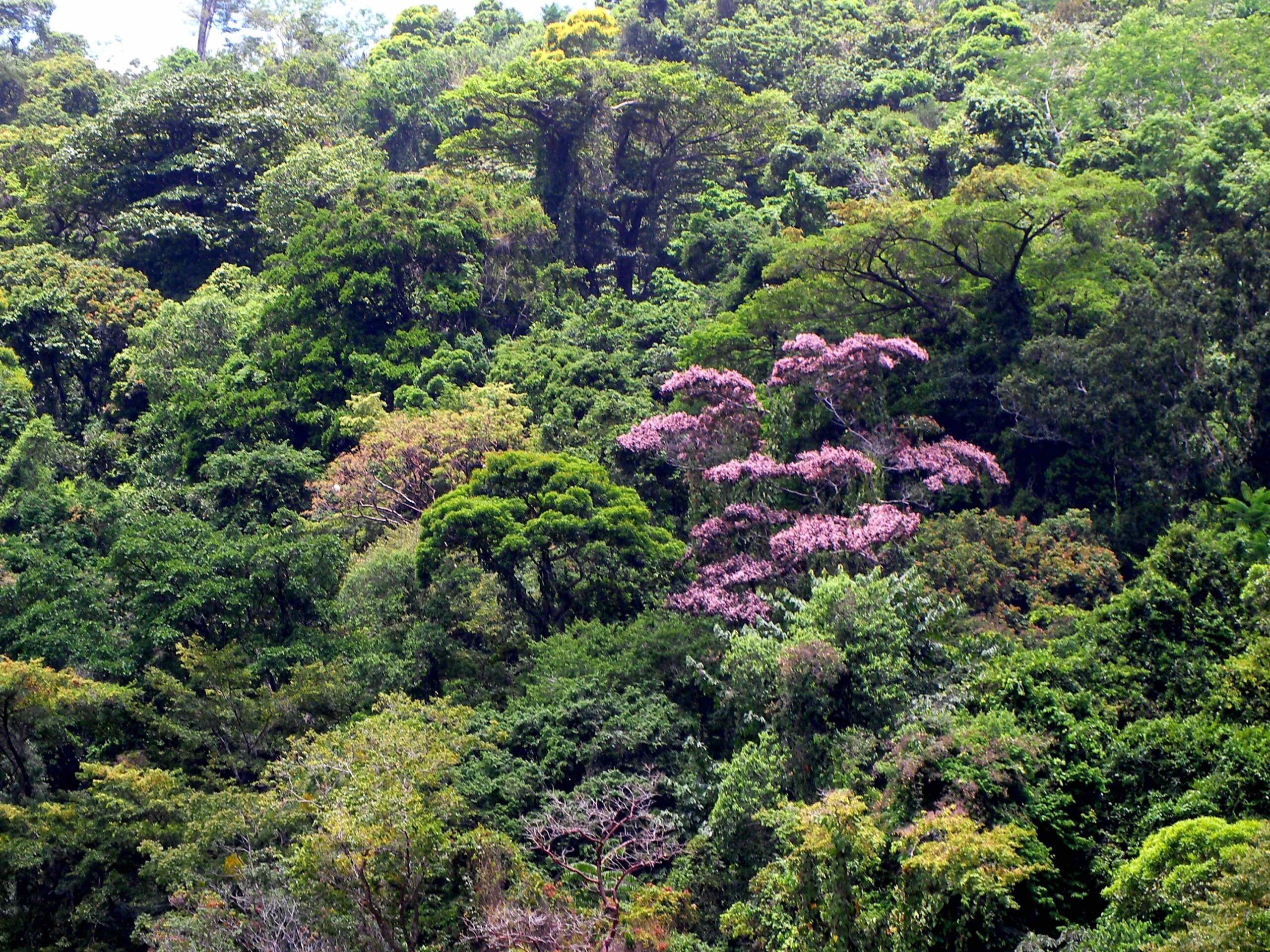
Our Biodiversity Carbon Plan
You can Help Save the Planet. Offset your Emissions Today.
Become Carbon Neutral Today
Increased Carbon Dioxide and other Greenhouse gases are contributing to Global Heating. Everything we do has an impact, whether you’re traveling, eating or purchasing goods. By offsetting your own emissions you can play your part and become Carbon Neutral.
Rainforest Saver’s Biodiversity Carbon Plan has benefits which go far beyond a tree-planting carbon offsetting scheme.
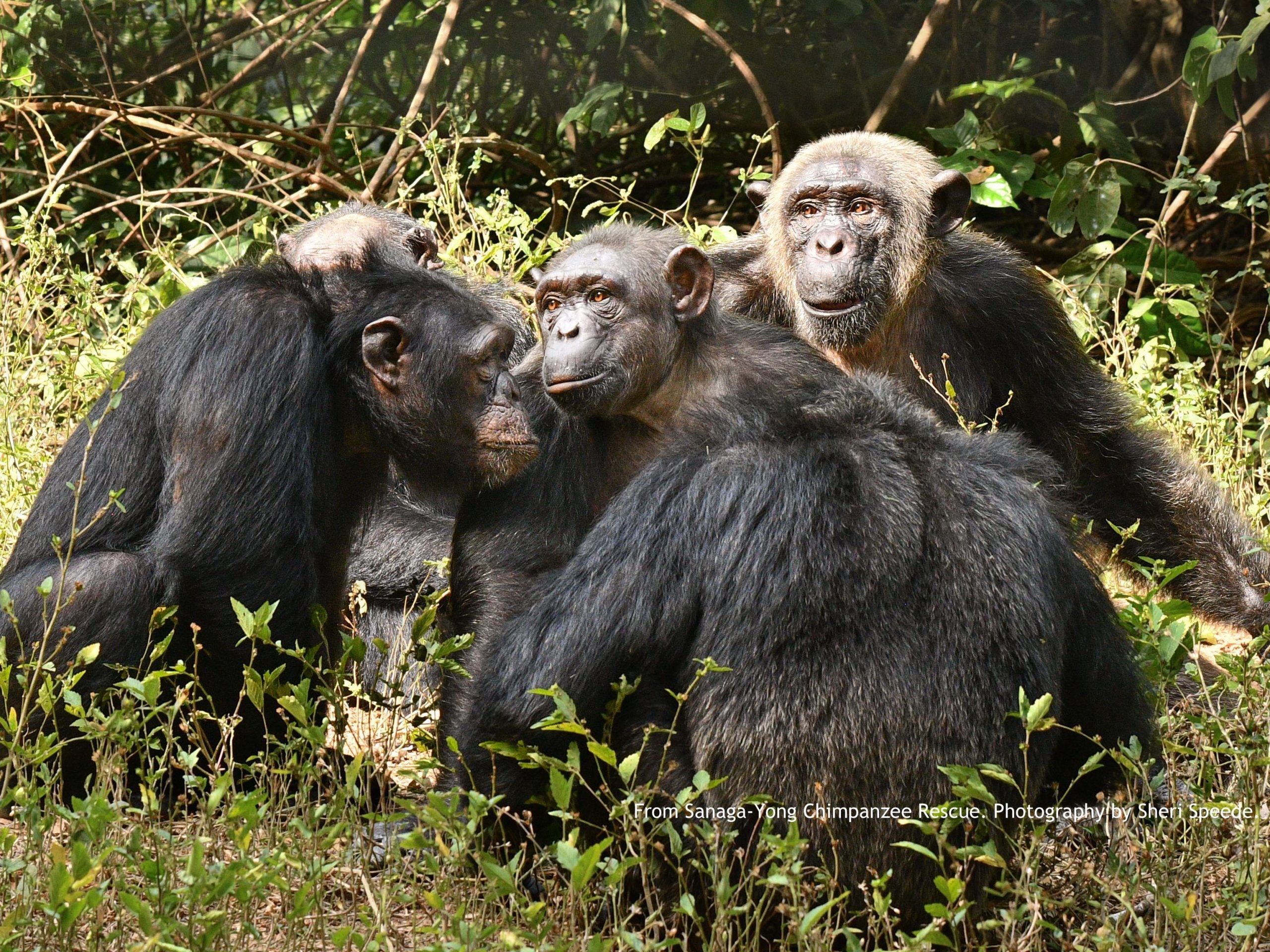
Preserve Essential Forests
Rich Ecosystems. Beautiful wildlife, plants and trees.
Unlike other schemes that simply plant trees, we focus on preserving existing forest. And not just any forest – but forests that include the beautiful, wildlife and species rich tropical rainforests of Cameroon, (Honduras) and Ecuador.
One of the biggest threats to these forests, particularly in Africa comes from individual farmers who cut down the forest to feed their families, a process called Slash and Burn agriculture. Most of the nutrients in a rainforest are in the trees, not the soil. So once cleared, these areas quickly degrade and fertility is lost. Thus a new area usually needs to be cleared a few years later. It all adds up to the destruction of vast areas of this precious and irreplaceable ecosystem.
At Rainforest Saver we work locally in small projects to train farmers to create sustainable farms that replenish soil using a unique, research backed process called Inga Alley Cropping. This means there is no longer any need to keep destroying new areas of rainforest.
Regenerative Farming Restores Soil and Captures Carbon
We help farmers create new farms that are lined with a special type of tree, Inga edulis. This legume tree replenishes the soil year after year, without the need for chemicals. It serves to prevent degradation of the land and boost crop yields many times over. The same farm can be used year after year – indefinitely. For every hectare planted with the Inga method we have the potential to preserve at least an equivalent area of existing forest. And as an added bonus the Inga system itself also sequesters carbon throughout its lifetime. And because the farmers rely on the Inga trees to support their farms, they have motivation to maintain them long term.
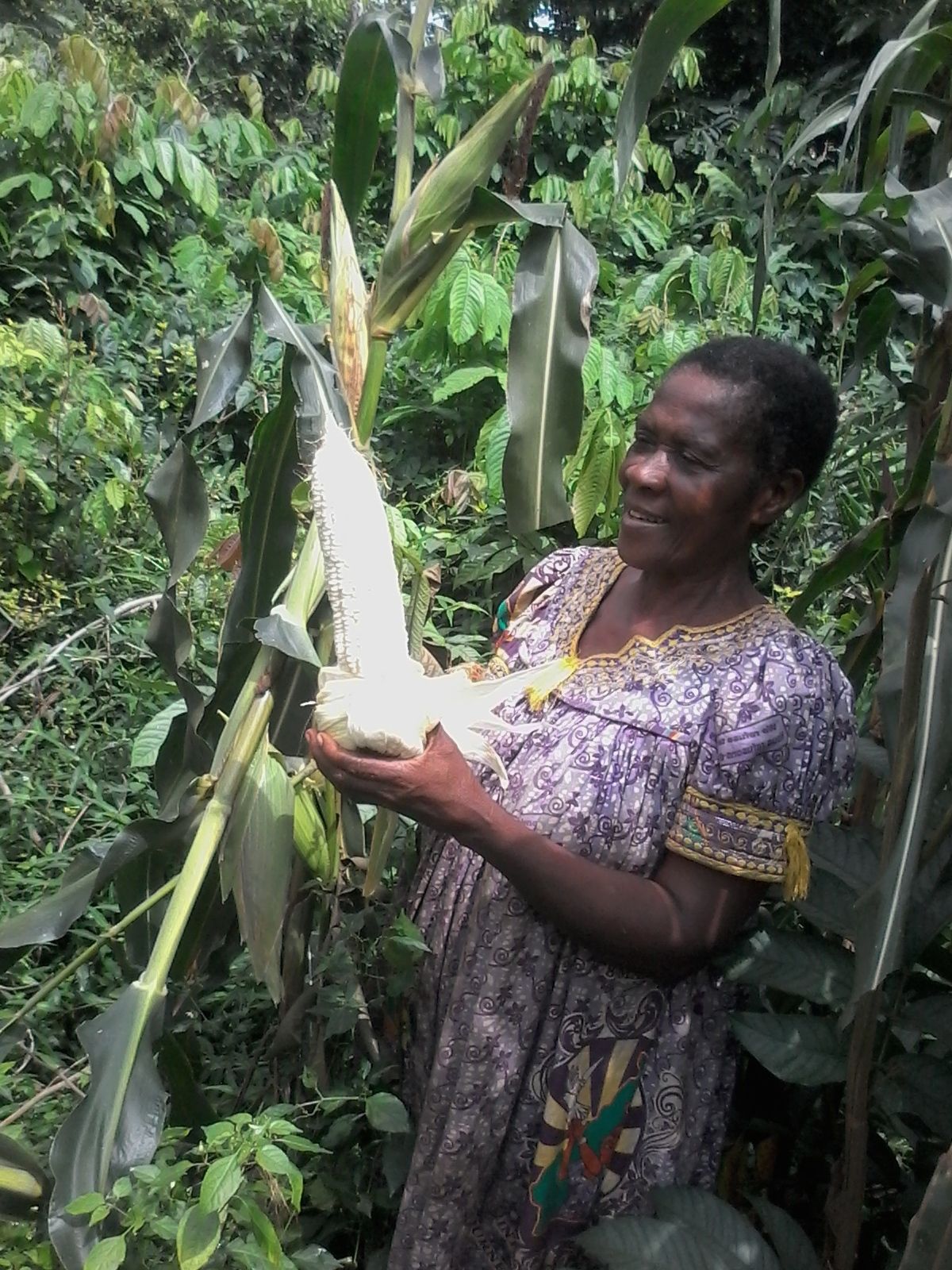
One of our Cameroon Farmers
Reducing Poverty and Increasing Security
By increasing crop yields and allowing farmers to stay on the same plot of land, the cycle of poverty can be broken. This is especially important when the global food supply situation is so uncertain. We believe food sovereignty – the ability for local people to feed themselves locally, is vital. Imports of food can be subject to supply and demand issues (not to mention creating an avoidable carbon footprint of their own during transport).
Why Plant When you Could Preserve Instead?

Planting trees and rewilding certainly has an important part to play in our climate crisis. But did you know that it can take two decades for a tree planted today to absorb a significant amount of carbon? Recovery of a tropical rainforest ecosystem takes far longer than that and full recovery may not even be possible.
Bringing back just some of the diversity of a rainforest takes decades. A 100 year old tree can weigh millions of pounds, storing and absorbing far more carbon than a 1 year old one and hosts a rich variety of wildlife that a young tree does not.
That’s why, even though our scheme does plant trees as part of the farming process, our focus is on preserving existing rainforests.
Offset Your Flight by Supporting Our Work
Buy an “offset” to support our work whenever you fly. Its only £5 and it will help us to continue preserving rainforest.
Get the Rainforest Saver Monthly Biodiversity Carbon Plan
Our rainforests and planet can’t wait. Help play your part with one of our regular monthly offset plans and:
- Become carbon neutral
- Preserve rainforests, wildlife and biodiversity
- Reduce poverty and increase food security
We are a UK registered charity.
-
Plans For Individuals
Standard Plan (UK/EU)
Offset “typical” UK carbon emissions for an individual (10 tonnes of carbon).
Buy Now for £6.99 per month
Standard Plan (USA)
Offset “typical” USA carbon emissions for an individual (16 tonnes of carbon).
Buy Now for $12.99 per month
High Use Plan
Use more carbon than average? Offset 20 tonnes of carbon per month.
Buy Now for £13.98 per month
-
Plans For Business
Would you like to offset your carbon emissions as a business? We offer carbon partnerships with affordable monthly subscriptions to do just that. Consumers the world over are demanding action on climate change and thousands of businesses are taking action. By joining them you won’t be left behind.
For example, Alara Wholefoods have become Carbon Partner with Rainforest Saver to offset all their carbon emissions and become carbon neutral.
Alara Wholefoods talk about their carbon offsetting with Rainforest Saver
You can read more about Alara’s carbon offsetting and their generosity here.
In order to offset your business, you will need to work out how much all your emissions are. That means working out Scope 1, Scope 2 and Scope 3 emissions (see below). You will then have a figure for the residual emissions for each year which can be mitigated by offsetting and can choose:
A. Business Offset Plan
Pay a monthly figure based on the current price per tonne of Carbon on the EU Obligatory Carbon Market (€89).
Buy Now for €89 Per Month (1 Tonne)
B. Become a Carbon Partner with Rainforest Saver
If you want to offset some other amount to mitigate your carbon emissions please contact us and we will be delighted to help you.
Calculating your emissions
Scope 1: is simple – what petrol, coal, gas or other combustibles has your business burned?
Scope 2: likewise – what emissions have resulted from generating your electricity?
Scope 3: is a little more complicated – all emissions generated by your procurement, transport and distribution. This means working with your supply chain to get the information, and work together on reducing them (if they are not already offsetting their own emissions).We may be able to find you someone to help you with your Scope 3 calculations.
Plans For Individuals
Plans For Business
Standard Plan (UK)
Offset “typical” UK carbon emissions for an individual (10 tonnes of carbon).
Buy Now for £6.99 per month
Standard Plan (USA)
Offset “typical” USA carbon emissions for an individual (16 tonnes of carbon).
Buy Now for $12.99 per month
High Use Plan
Use a lot of carbon? Offset 20 tonnes of carbon per month.
Buy Now for £13.98 per month
Plans For Individuals
Plans For Business
Would you like to offset your carbon emissions as a business? We offer carbon partnerships with affordable monthly subscriptions to do just that. For example, Alara Wholefoods have done just that, becoming a carbon partner to offset all their carbon emissions and become carbon neutral.
Alara Wholefoods talk about their carbon offsetting with Rainforest Saver
You can read more about Alara’s carbon offsetting and their generosity here.
In order to offset your business, you will need to work out how much all your emissions are. That means working out Scope 1, Scope 2 and Scope 3 emissions. Our business carbon expert can work with you to help you to calculate this total for your business. Then we can provide a quote for a simple monthly payment to offset your emissions.
If you are interested in becoming a carbon partner to offset carbon used in your business, please contact us.
Frequently Asked Questions
Our plans focus on the average to keep things simple. If you want to offset a different amount please contact us.
If you’d like to know more about our carbon calculations in detail please click here.
Unlike some other tree planting projects where the trees may be cut down soon, the farmer using the Inga system depends on her/his Inga to feed the family. We therefore expect them to look after the plots long term.
In order to counter act global heating we need to come together to find lots of different ways to reduce and then eliminate our carbon emissions. Offsetting has a role to play, along with methods such as initiatives to cut emissions in the first place.
It is worth reminding ourselves that the build-up of greenhouse gases (GHGs) in the atmosphere due to use of fossil fuels means they have increased from a pre-industrial level of 280 parts per million (ppm), to a current level of 419 ppm (rising daily), well past the safe level of 350ppm and dangerously close to the figure of 450 ppm which is likely to trigger runaway climate change. We have to REDUCE carbon emissions by around 15% A YEAR to start returning to the safe level of 350ppm. We need to reduce use of fossil fuels to ZERO as soon as possible. Not “net zero”, but zero; but as we live in a society built around fossil fuels it is hard to eliminate them and we can for the time being “offset our carbon emissions” to get ourselves to “net zero”.
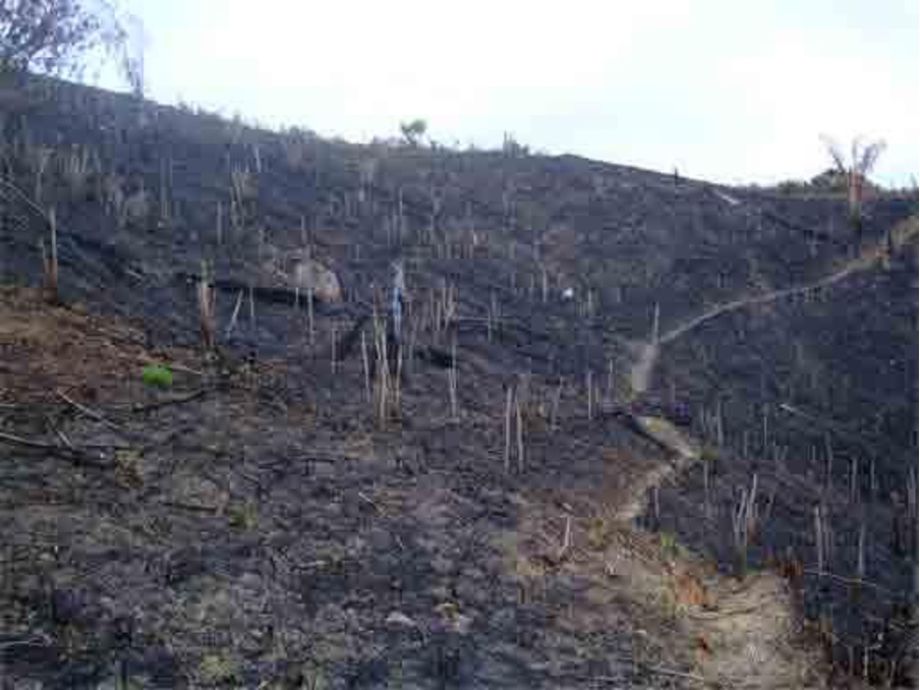
Slashed and burned slope. Photo © Richard Seal 2011.
Maybe about 250 million farmers (they are not easy to count) are forced to eke out a living like that on these poor rainforest soils. By slashing and then burning the forest, these farmers can usually sustain themselves for only 2 consecutive years on the same patch of soil. Indeed quite often they clear a new plot every year.
The soil then loses its fertility and the farmer is faced with either a daily walk of several miles to a new patch or, increasingly as the number of landless farmers grows, they may have to uproot their families to move.
Alternatively they may go on using the same plot for several years by having several plots and leaving them fallow for maybe 4 years, maybe a bit longer, but they cannot leave them fallow long enough (like 20 years) for the plot to fully recover. The result is increasing degradation of the soil until it can become useless for anything but tough weeds.
Often they have to cultivate hillsides as all the land lower down is used up, and as they progress up and up they are likely to meet another farmer at the top who has similarly worked his way up from the other side.
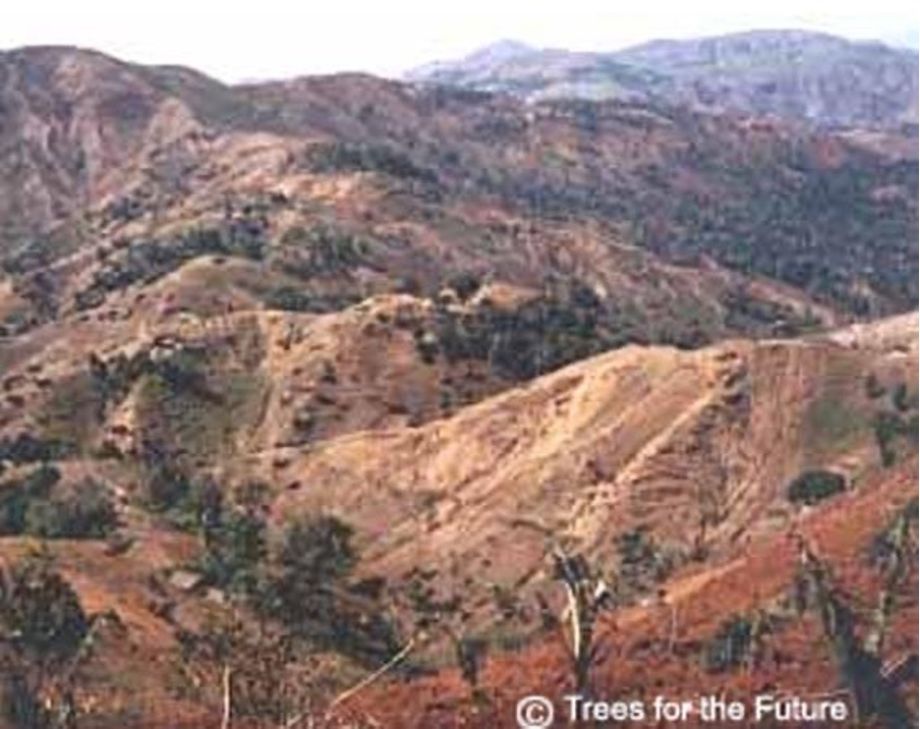
The result of repeated slash and burn farming. These hills were once forested. © Trees for the Future.
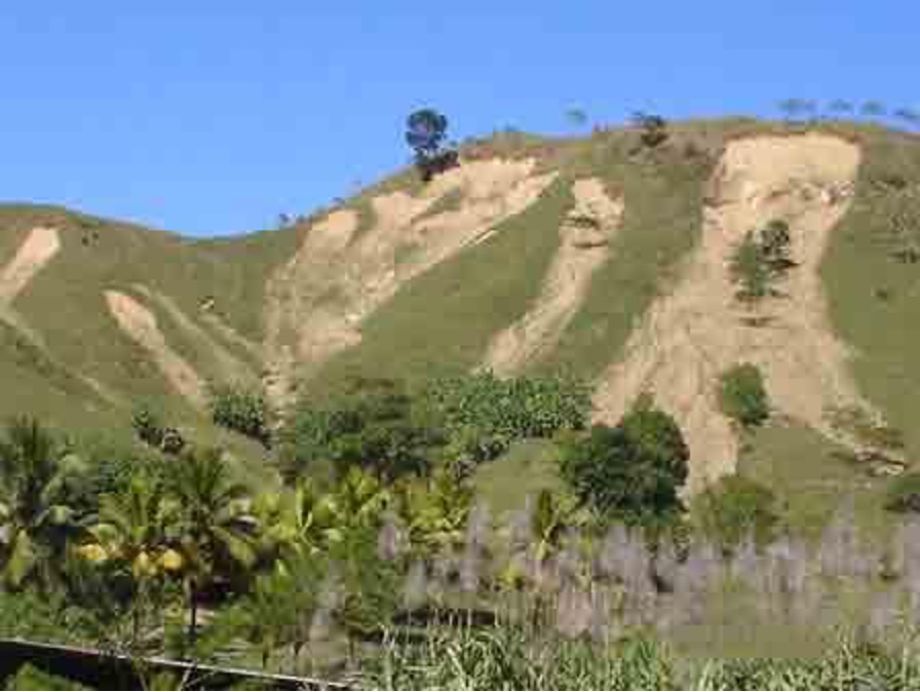
Hillsides denuded by continuous slash and burn. Photo by FUPNAPIB 2006.
When the plots are far from the dwelling place cash crops cannot be guarded from thieves or wild animals, nor can the family help when there are young children. This too ensures the farmers remain poor.
In earlier times when the population density was less, slash and burn worked reasonably well. It was then possible to leave the plots fallow for 15 to 20 years which allowed considerable regrowth of the forest and good restoration of soil fertility. Now the plots have to be reused too soon, with increasing loss of fertility. But even when it was possible to grow enough food reasonably easily with this system the farmers still remained relatively poor.
Not only is this devastating the worlds remaining tropical forests but it is also forcing many of them to abandon the land, and migrate to city slums in the hope of feeding their families. Life in the slums can be very hard indeed. There is not enough work available.
Recent research (https://news.mongabay.com/2018/09/whats-causing-deforestation-new-study-reveals-global-drivers/) said that shifting agriculture accounts for 24% of forest loss worldwide, but over 90% in Africa. It is common in Cameroon.
